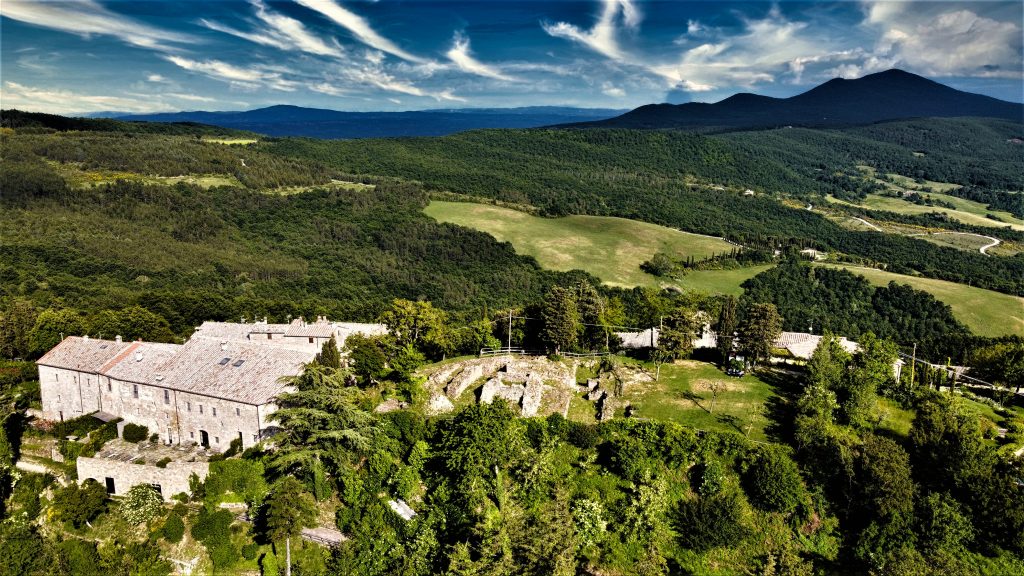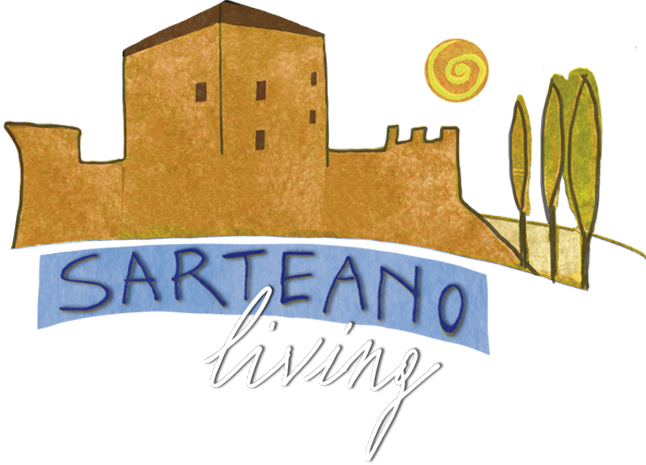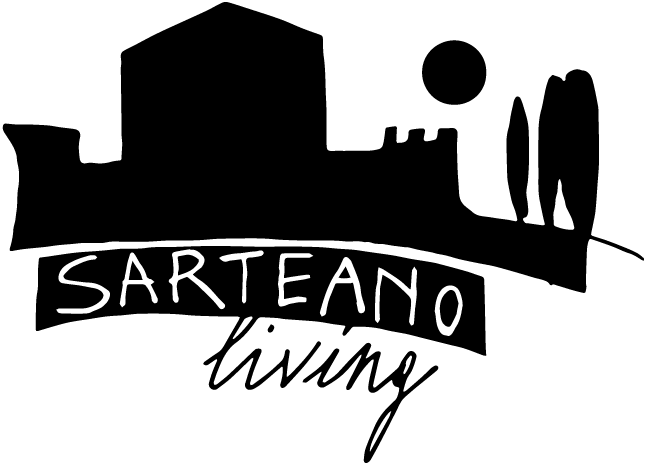
Ecco la traduzione in inglese del testo:
Castiglioncello del Trinoro was defended by fortifications, with five churches inside the walls and a town hall. From its ancient origins (possibly Etruscan) remain the Romanesque Church of Sant’Andrea, a 14th-century gate, and the Town Hall. Its dominant position (774 meters above sea level) over the Val d’Orcia made it a control center on the road running through the valley floor. Legend has it that Castiglioncello became a hideout for thieves who robbed travelers on that stretch of road, and its name is believed to derive from Castrum trium Latronum, meaning Castle of the Three Thieves, later softened to Castrum Leoncelli Trinaurum, Castle of the Little Lion of the Three Golds. However, there are many hypotheses regarding the name, none of which are convincing. A thorough excavation by the University of Siena has uncovered the remains of an ancient fortress (at least dating back to the 11th century). Further research has highlighted access to the Sienese castle and the continuation of the protective city walls. From the foundations, now visible in a sort of archaeological garden, two watchtowers can be clearly seen. Castiglioncello belonged to the Manenti Counts, who in 1117 and 1126 ceded it to the Camaldolese Abbey of San Piero in Campo in the Val d’Orcia, which in turn transferred it to the Republic of Siena around 1250. The latter, in 1259, in order to cover the expenses of the war against the Florentines, ceded it with other castles to the Salimbeni family. This noble Sienese family, which is said to have often hosted Saint Catherine of Siena, maintained ownership with alternating fortunes until 1418, when the citizens revolted, passing it as a free commune to the Republic of Siena (with the promise not to accept any members of the Salimbeni family). In 1497, the agreement was confirmed. Subsequent events were tied to the Republic of Siena.

